Air conditioner IT. Part I
Penny, things get better when there is bluetooth © Sheldon, TBBT
Although the house is " test ", everyone tried to do it as correctly as possible - good insulation, decent double-glazed windows, etc.
In winter, in clear weather, the sun warmed up the house to the point that heating with underfloor heating was switched off by a thermostat. Everything seems to be fine, but spring came and it became clear that the house was just overheating and needed to be cooled.
We foresaw this scenario and prepared in advance for the installation of an air conditioner: we laid all the necessary highways at the construction stage.
To the issue of windows
In general, of course, it would be worthwhile to put double-glazed windows with MF and I-glasses, but here the "double-edged sword" (however, as always) - they would not receive free heat from the sun in winter.
Ideally, it would be first to calculate what is more profitable: it is less to use an electric underfloor heating for heating in the cold period or less to use an air conditioner for cooling to warm, and based on this analysis, choose which double-glazed windows to install.
But no one has done such an analysis, so we have what we have.
By the way, neither builders nor window workers recommended which double-glazed windows would be better to use in our case. You have to figure it out on your own (including paying for errors).
Ideally, it would be first to calculate what is more profitable: it is less to use an electric underfloor heating for heating in the cold period or less to use an air conditioner for cooling to warm, and based on this analysis, choose which double-glazed windows to install.
But no one has done such an analysis, so we have what we have.
By the way, neither builders nor window workers recommended which double-glazed windows would be better to use in our case. You have to figure it out on your own (including paying for errors).
One of the important criteria for choosing an air conditioner for my “test house” is the possibility of its integration into the “ smart house ” system.
Integration "cheap and cheerful"
Of course, the easiest integration of almost any air conditioner is the use of IR remote control commands. But this option does not suit me for ideological reasons: there is no information about the current state of the device.
Therefore, we immediately discard this option and move on.
Therefore, we immediately discard this option and move on.
Flour of choice
Naturally, the remaining parameters are also very important (from the main priorities: the most silent operation, the energy consumption class is not lower than “A”, the price).
The choice fell on the inverter Electrolux (Atrium series). The manufacturer explicitly indicates that the air conditioner can be controlled via WiFi (you only need to purchase the optional WiFi module).
The price is relatively humane (other inverter models with WiFi are about 30% more expensive, which is somehow too much for a guest house).
Wake Up Call
The supplier for some reason somehow hesitantly talks about the WiFi-module and in every possible way evades from its delivery under various pretexts. Now I understand that this is a “bell”, but we move on.
Google help, manuals and other information - (sort of like) requires the Electrolux ECH / WF-01 Smart Wi-Fi module. And there is no shortage at all (this module is also used for water heaters and electric convectors of the same manufacturer) and the price is more than affordable - less than a thousand rubles (in general, it should have been slightly alerted). The management application is one for all these types of devices, which seems quite reasonable: the manufacturer wants an “ecosystem” to be formed.
A little more research (peeking at the regular Android application code) and it turns out that the application communicates with the cloud at: dongle.rusklimat.ru/api - yeah, it becomes even more interesting and thoughts immediately appear how it will be necessary to provide integration with the smart home system (UD).
"Bell" number two
A customer’s review came across on one of the sites, where he said that the cloud often “rolls around” and initially he waited and tortured technical support for about two months before the system worked as stated. The review is quite old - I thought that I had already fixed the problems and everything would be fine.
The split system was ordered, the installation day was appointed - everything is clear: a couple of hours and a pleasant coolness is provided.
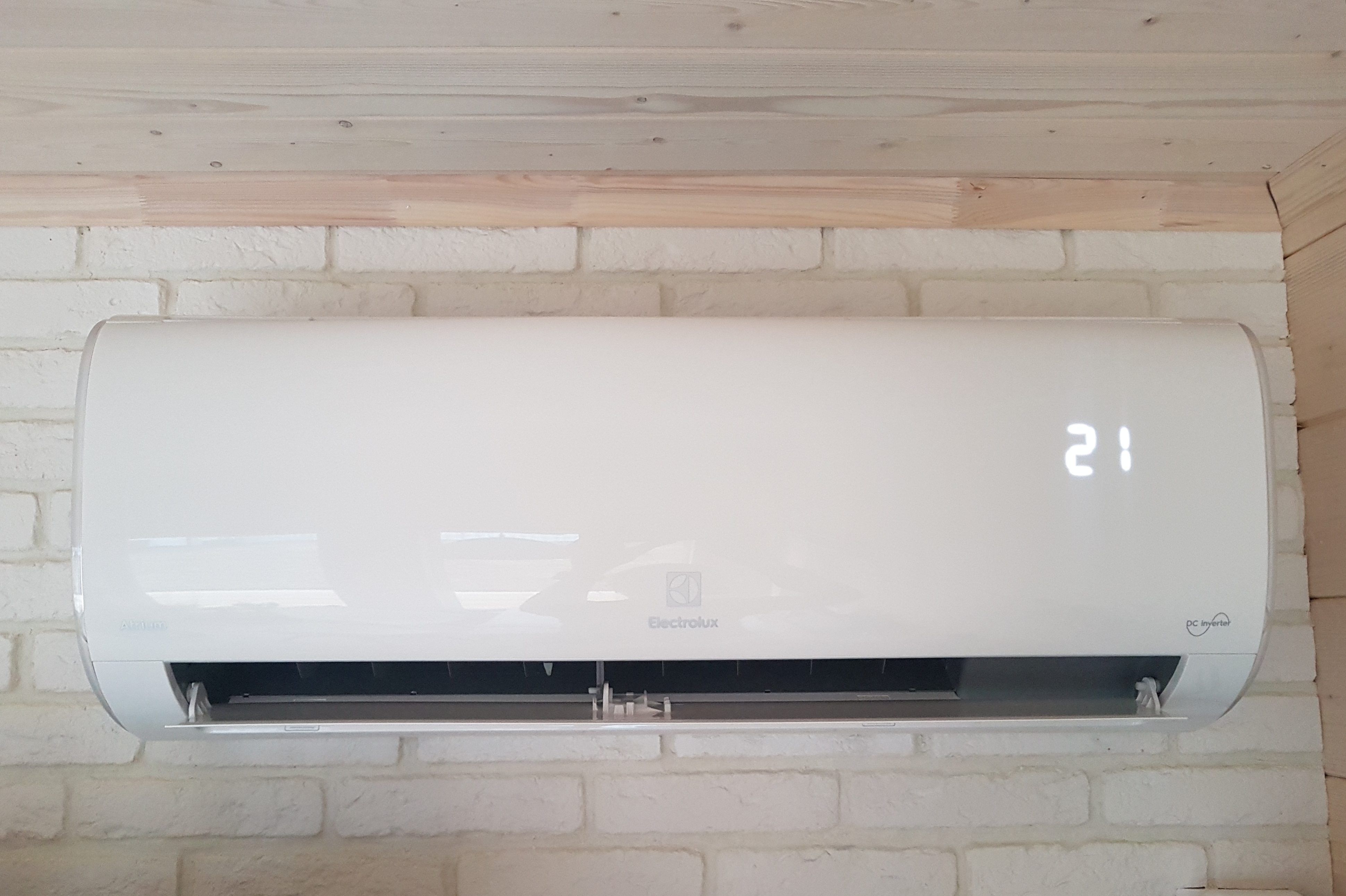
Now it's time to order an optional module.
Rake
The Smart WiFi module arrived - it’s nothing special: a rough “flash drive” with a single button and an LED that glows dimly through the case (of course, when connected to power).
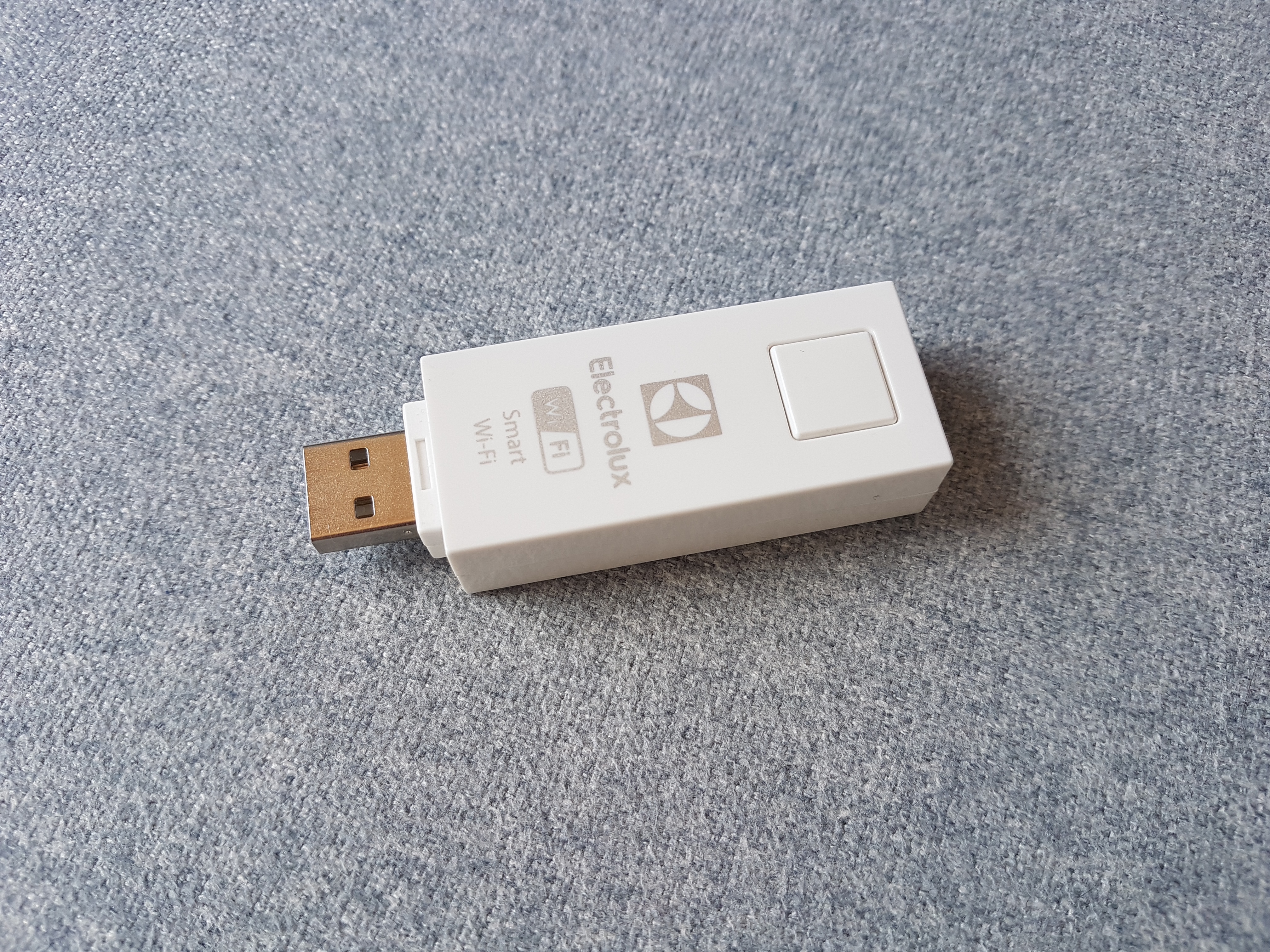
I plugged it into the laptop first (I need to look at what the module “pretends to be)” ... but not a single new device appeared in the system (I was surprised, but for some reason not very much).
Okay, let's try to use it in a regular way: the module has taken the corresponding connector in the indoor unit of the air conditioner.
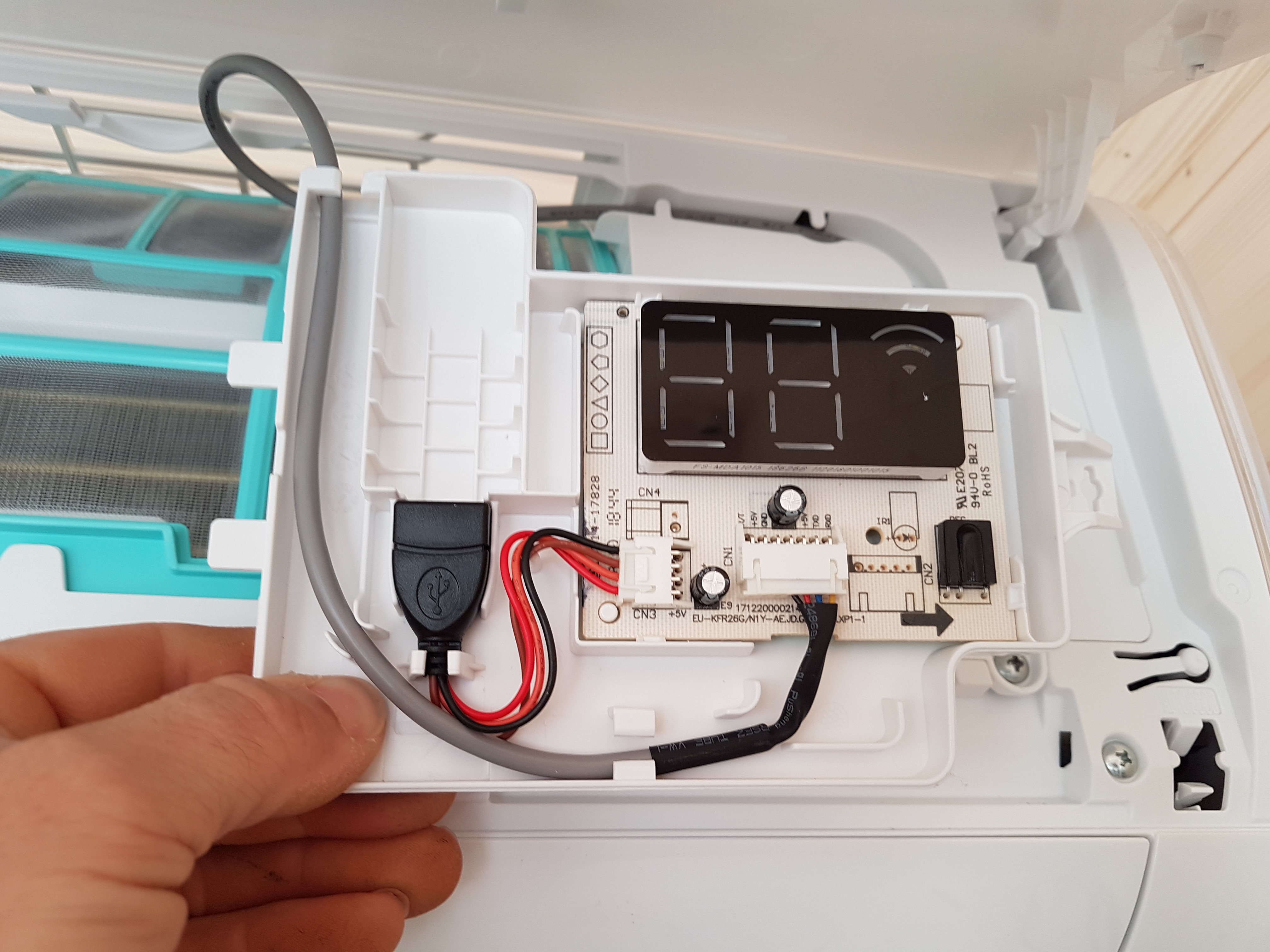
Reverse side of the display board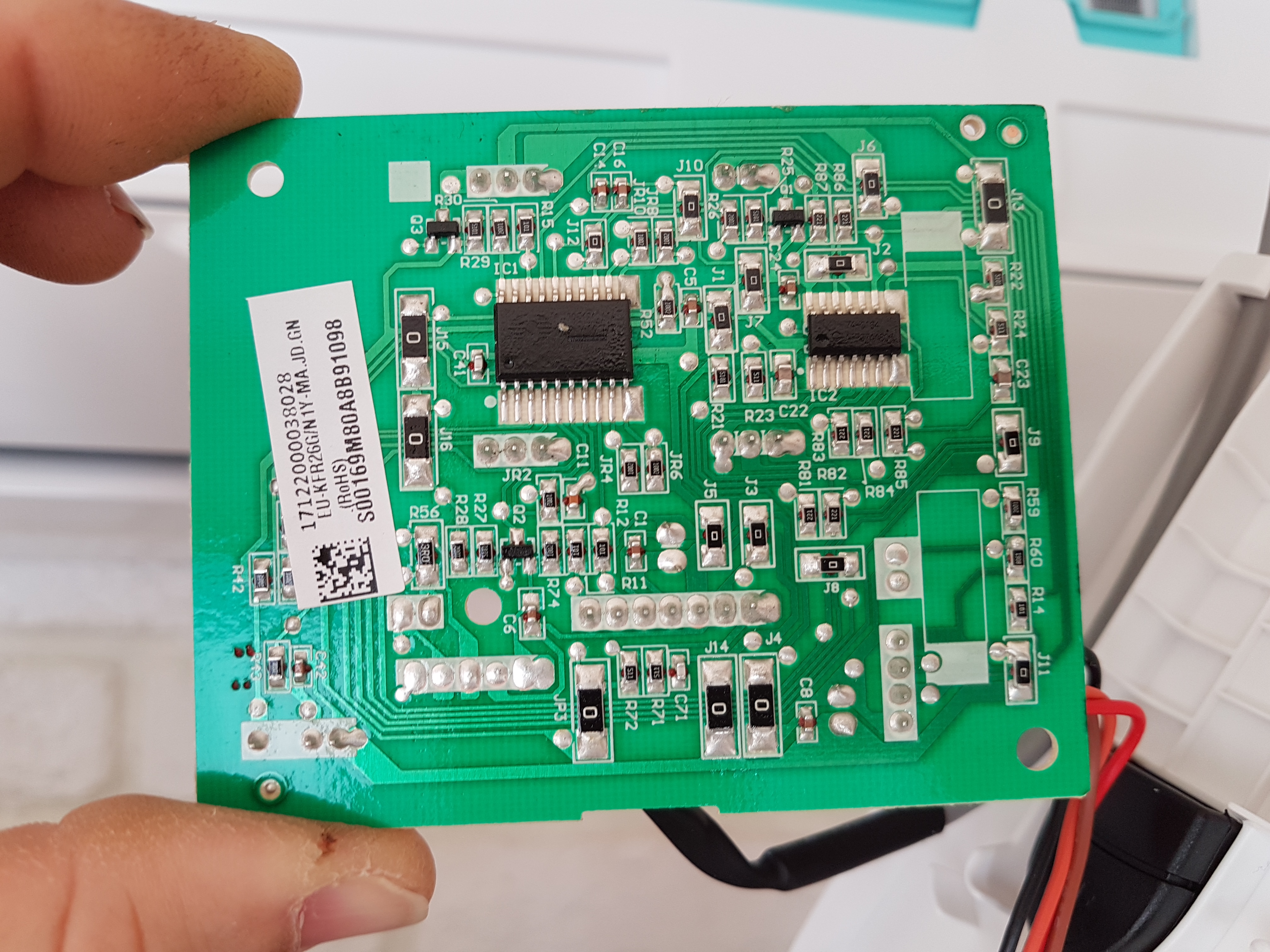

Installed the program and followed the instructions: he pressed the button on the module for five seconds - he started blinking a yellow LED (Smartlink mode), in the dialog that appeared, indicated the name of the wifi network and its password ... the light on the module blinked and turned blue (according to the instructions - normal mode).
Although everything was done according to the instructions, the device did not appear in the program (various fears began to be justified).
Well, okay, we move on and try to understand what we are dealing with - we look at the router’s web interface. Router - showed that the new wifi device is connected and working (cheers, a small victory and something still works).
At the same time, the router passed this module as a glass container: the name of the new host is “HF-LPT220”.
A quick search showed that this is a SoC UART-WiFi (about $ 5 retail apiece and 60-80 cents for bulk purchases).
An autopsy revealed that the patient died from an autopsy.
We disconnect the module from the air conditioner and open the case of this whistle (it opens easily and closes easily).
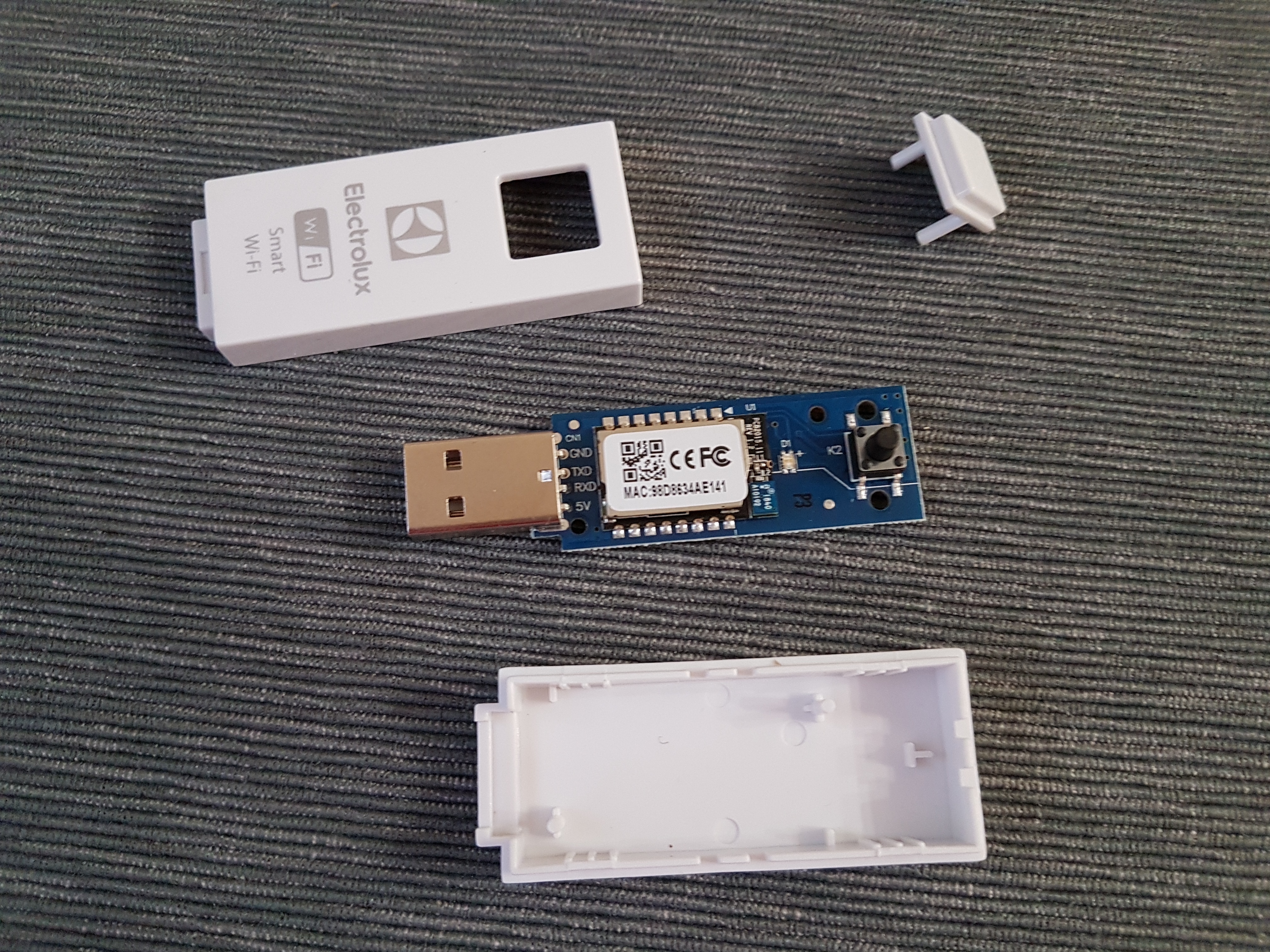
It can be seen in the photo above that the router told the true truth: a “three-penny” module with a minimum binding (power stabilizer, LED (two-color), button, level converter) - it became clear already that even the requested price for this module was clearly overstated (okay , we assume that they also laid down the salaries of programmers who were supposed to write firmware that would provide the necessary functionality).
Pay attention to the signed contacts of the usb connector (from usb - only the connector housing and the same location of the power leads) - therefore it is not at all surprising that the module was not detected by the computer.
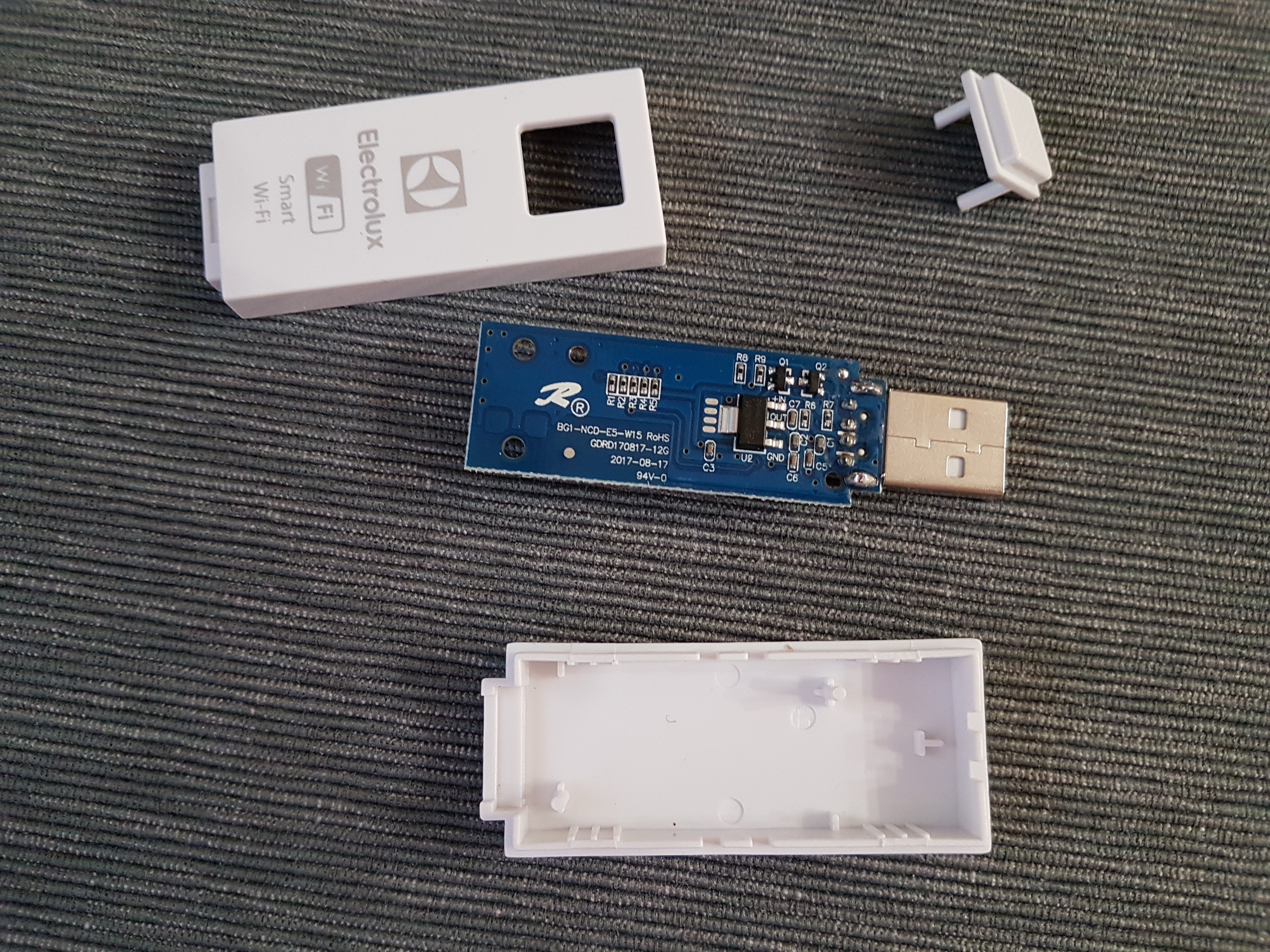
Thus, the automation of control of this air conditioner - you can do it on anything (even on Arduino) - you just need to know what commands the system expects to receive.
But this information about the teams we just do not.
Thought vectors
Actually, since all the components on hand appeared some additional information about what we actually have, the following options seem logical:
- Analysis of network exchange - the idea was to implement a “proxy server”, to which to forward the initial exchange between the air conditioner and the “cloud” (by means of a router), and from this “proxy” - to organize interaction with the “cloud”. Then integrate this server into the smart home system - at the same time, it would be possible to achieve work both through a standard application for the air conditioner, and control via UD (automatic scripts, etc.).
- Connect a computer via the USB-UART module to the internal unit of the system, select the exchange rate and “listen”, what does the air conditioner tell the module (I want to believe that the exchange is going on regardless of whether the standard module is connected or not). Hope that after receiving commands from the IR remote control, the air conditioner executes them and sends the corresponding message through the WiFi module to the “cloud” to display the current status. And hope that the developers are lazy and these messages are identical to the commands received from the WiFi module.
- Connect the computer via the USB-UART module to the WiFi module and try using the standard application to “steer” the air conditioner and at the same time receive commands from the WiFi module for the split system. This option is very promising for analysis, but, unfortunately, my air conditioner did not appear in the standard application (at the moment) - therefore, sending commands from the phone is not possible.
Attempts
Since the regular application did not start with the WiFi module, I started from the simplest - I went according to option 2: I took USB-UART and connected to the indoor unit of the air conditioner.
Unfortunately, the option did not bring a result - the split system is “silent” at all metabolic rates and does not react to external stimuli. Apparently, “hacking protection” is built-in: probably, the original WiFi module sends some data, according to which the main unit recognizes “ours” in it and exchanges.
While dealing with his hypothesis, he wrote several letters: to Electrolux and to developers of mobile software.
Electrolux
Actually, all climatic equipment under the Electrolux brand is officially supplied by Rusklimat (my first acquaintance with this company was about 10 years ago and it was far from pleasant, but that's another story). Therefore, I was not very surprised when, in response to a request on the Electrolux website, I came from a Rusclimate technical specialist.
Well, the answer was with such a sense that the module that I purchased does not fit air conditioners, but there is no “suitable” one yet and is only expected in mid-July 2019.
Mobile Software Developers
The developer of software for Rusklimat is the company Ipol LLC. The developers replied that in the current version the air conditioners were not supported at all, and of the request to “share the exchange protocol”, of course, they replied that they did not disclose such information.
The end?
Of course not! Now it remains only to wait for the manufacturer to release a “compatible” WiFi module and repeat all the reverse engineering vectors, but with the “correct” module.
In the meantime, I’ll return to the “cheap and cheerful” automation option (I’ll have to control the operation of the air conditioner using a video surveillance camera - the indoor unit just gets into the frame).
If suddenly someone comes up with how to nevertheless do the “right thing”, I will be glad to see a hint. And if someone already “went this way” and shares the exchange protocol - I will be just happy;)
By the way, a very interesting information plate appeared in the bowels of the indoor unit, which gives a couple more new “vectors”:
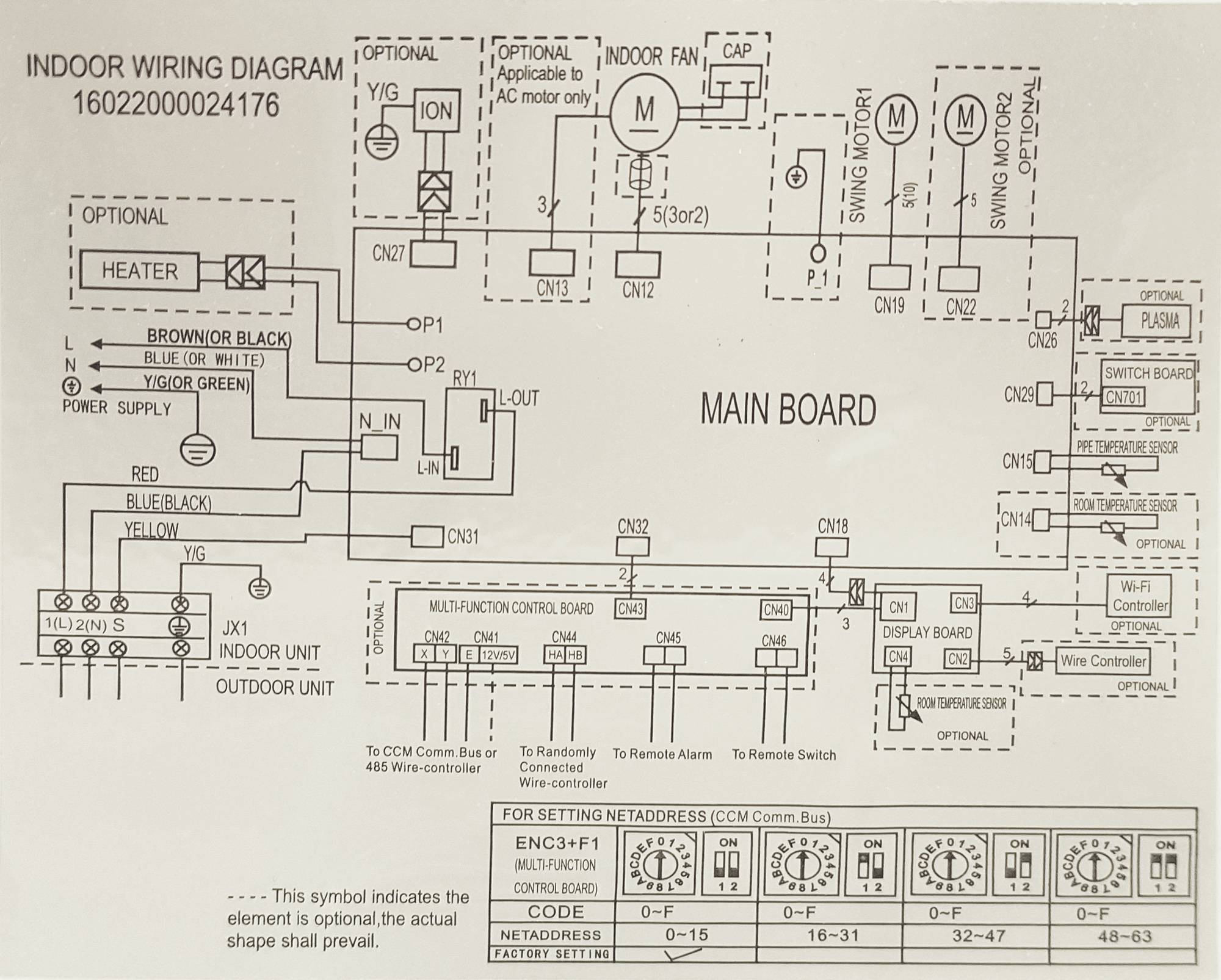
PS " Part II“with a detailed description of the solution,“ cheap and cheerful ”will be later (you just need time to find it).
I hope the PPS“ Part III ”with the“ right ”solution appears after acquiring a compatible module (it remains to wait for it to be available).
